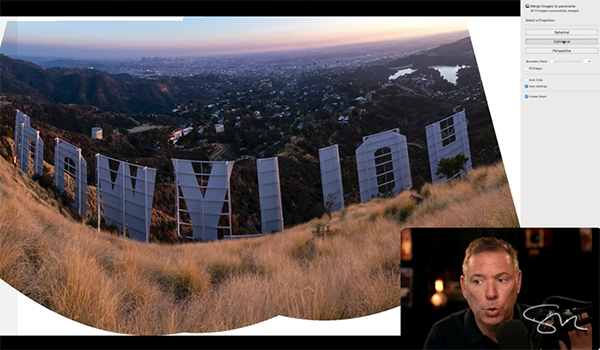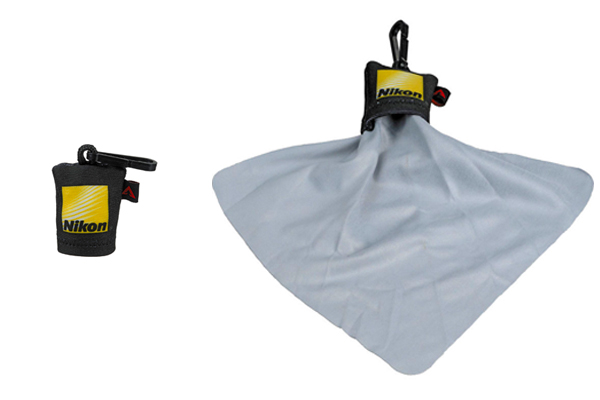How To Create A Mid-Century Modern-Inspired Kitchen
The kitchen design of the mid-20th-century is a timeless style that has remained relevant over time. This aesthetic originated during a time when mass consumption was just starting to become popular, and much of the materials used were durable and of high quality. Additionally, the persistent influence of modernist styles into the post-war period also impacted the mid-20th-century style.
In this article, we take a deep dive into the world of the mid-20th-century kitchen to find out what they looked like, what materials were used, why the style has persisted for so long; and finally, how you can implement this modern linear aesthetic in your home without installing a brand new kitchen.

What is a Mid-Century Modern Kitchen?
A mid-20th-century modern kitchen is defined by clean lines, smooth surfaces, and reliable materials like stainless steel and hardwoods. That said, not every kitchen that has these elements can be considered mid-20th-century modern; of course, they have to be arranged and fashioned correctly.
A mid-20th-century modern kitchen will have stainless steel swan-head faucets, plain or contrasting kitchen cabinets, lights with steel casings that provide accent lighting, and flooring made from teak or black walnut hardwoods. However, there are plenty of budget ways to get the same effect these days.
Interested in transforming your kitchen giving it that mid-century modern feel? Not only is this style trendy and functional, but it’s also hugely flexible; making it very easy to adapt your kitchen to suit different decades as color and pattern trends change.

What Do You Need For Mid-Century Modern Kitchen Design?
Must-have appliances in bold colors
If you want a mid-century kitchen, but you don’t want to retrofit your kitchen at great expense, there are some easy ways to do this – you don’t even have to crack open the paint pots! All you need is some must-have appliances in the right style. As you know, mid-century modern style loves strong colors.
Must-have appliances in the kitchen include things such as a toaster, a kettle, a coffee maker, a food processor, and a microwave. These items are enough to live comfortably in any home, and if you want to transform your mid-century modern kitchen, choose bold plain colors that either match or contrast.

Wood cabinets
Mid-century modern kitchen designs are all about the wood; the reason is that an original mid-century modern kitchen was developed shortly before the inception of mass-produced plastics and plexiglass – this means that a traditional mid-century modern kitchen today uses wood cabinets.
If you’re serious about your mid-century modern kitchen, install new wood cabinets made of hard, long-lasting wood such as teak.
There’s also a cheaper way to obtain the mid-century modern style you dream of without the expense – simply change the cabinet doors for ones that are on-trend.

High-spouted sink faucet
One notable feature of the mid-century modern kitchen and mid-century modern style is elegant lines and smooth surfaces, which means the faucet is usually on-trend. Kitchen faucets tend to be swan-neck faucets made from stainless steel, exactly what you want for a mid-century modern kitchen.
Although you won’t have to spend too much time thinking about your kitchen faucet for a mid-century style, you can use this kitchen feature to enhance the mid-century style in your kitchen. Invest in a tall, elegant, smooth swan-neck kitchen faucet that will add a little extra to your mid- 20th-century kitchen.

Mid-century style lighting fixtures
The mid-century look tends towards large windows and natural light, making lighting an incidental feature; despite this, lighting can be an important feature in the mid-century kitchen. There are a few ways you can adapt the lighting in your home to make it closer to the mid-century flair you crave.
In terms of materials, lighting fixtures can be made from traditional smooth wood or metals such as brass and steel. In mid-century modern lighting, there is also a trend towards round circular lightbulb fixtures in a spiky design like a sputnik satellite, reflecting incoming styles of the space race in the 60s.
Teak kitchen furniture
Natural materials are very common in mid-century styles because they were popular in America during the heyday of the style in the 1950s and 1960s. The most popular type of wood used was old-growth teak and American black walnut; these are hardwoods that are long-lasting and beautiful.
Although these traditional materials are not fundamental to creating a mid-century modern kitchen, they are recommended if you can acquire them. Teak and black walnut cabinets can be acquired online or bought locally to replace your cabinet doors. Alternatives include any fine-grain wood or laminate.
Subtle, stylish flooring
If you want an authentic mid-century remodel, you will have to remodel the flooring and put down natural stone, travertine, or bluestone. This type of flooring was traditionally used in the 1950s and 1960s during the heyday of this popular style. Nowadays, there are plenty of alternatives.
It’s perfectly acceptable to use hardwood flooring for the mid-century vibe in your kitchen. Hardwood is popular throughout all true mid-century kitchens, and nowadays, you don’t even have to use authentic hardwoods; laminate flooring works just as well – laminate flooring is also far cheaper.

Functional kitchen island
The breakfast nook is a popular feature that’s era-defining in a few different decades; however, the innovation is very much rooted in the midcentury modern kitchen where it originates. A breakfast nook is a functional island with tall chairs setup; it’s easy to serve food here and communicate.
If you have space in your mid-century modern kitchen, don’t go without a functional island; not only does it make your kitchen stylish, but it gives you more cooking space and more space to serve food. That said, an island is not absolutely necessary if you want to create a mid-20th-century look.
Retro-inspired backsplash
In traditional kitchens of this style, the backsplash was made from tiles that usually had bold colors and interesting patterns. Again, tiles are not so important nowadays to achieve the look you want, meaning you can create the perfect kitchen style for cheaper, but it’s worth the effort if you can invest.
When it comes to this post-war style, the details count, and the backsplash is a versatile way to influence the kitchen’s overall atmosphere. Even if you decide to use a laminate backsplash, consider the color choice and try to match or juxtapose it with other features and appliances in your kitchen.

Mid-Century Modern Kitchen Ideas
Scandinavian inspired
Although the Scandinavian style stands alone as an aesthetic tradition, it owes a lot to mid-20th-century modern styles and, by extension, the original modernist movement of the late 19th and early 20th centuries. Scandi syles are defined by minimal decorations, neat lines, and simple features.
To achieve a Scandinavian style in your kitchen, you don’t have to invest heavily in retro graphic design; all you have to do is decorate the area with plain simple colors and create a warm glow with minimal accent lighting. Finally, opt for wooden kitchen cabinets and wooden floors or laminate.
Light and airy
One of the hallmarks of the mid-20th-century styles is natural light; if you look at pictures of kitchens from this era, you will find tall windows with net curtains to allow in floods of light. Although it’s not always possible to achieve the same style in modern homes, there are a few ways you can adapt.
First, choose a light color palette to paint the walls and kitchen cabinets with; this reflects the light that does come in and squeezes out every last bit of value. The next thing you can do is use fine white net curtains like in traditional kitchens; finally, paint your kitchen cabinets a pale shade for an airy vibe.

Colorful and inviting
Light and airy works well for mid-20th-century kitchen styles, but it isn’t the only way to create an authentic-looking kitchen in this tradition. A major aspect of mid-20th-century- modern style is the use of color in creating contrast and interest in the kitchen area, and this is also easy to achieve.
Instead of a color palette that’s light and airy, choose ones that are colorful and creative, include looks of warm tones like red and yellow but make sure your color is solid and contrasting. Use your palette to paint accent walls and kitchen cabinets; also consider adding inviting house plants into the space.
Final Thoughts
A mid-20th century modern kitchen is defined by clean lines, smooth surfaces, and spacious cooking areas; in terms of color, they can be light and airy with a dash of color from wooden surfaces and floors or warm and inviting with bold solid colors and plants. There are various ways to achieve this look.
If you’re serious about a kitchen in this style, the best way to achieve it is with a complete retro refit. A retro refit will renovate your kitchen and install all the basic features of a mid-20th-century kitchen, such as hardwood kitchen cabinets, an island, and tiled backsplash areas that look authentic.
That said, it isn’t the only way to achieve a mid-20th-century modern kitchen; you can do it on a shoestring budget. If you’ve grown tired of your kitchen and you want a refresh, allow yourself to be inspired by the 20th century and use budget materials like laminate and paint to transform the space.
FAQs
How can I add mid-century modern design to an existing kitchen?
Sometimes it’s not possible to install a brand new kitchen in the style you desire, but that doesn’t mean you have to miss out. On the contrary, there are plenty of ways you can adapt your existing kitchen and incorporate some of that mid-century modern design that you know and love.
Mid-century design is defined by clean lines, solid colors and, smooth surfaces, so if you approach your kitchen project with these abstract principles in mind, you can make changes that align with mid-century modern design. Think of changing cabinet doors and using bold-colored appliances.
Are mid-century modern kitchens going to stay in style?
Some people assert that mid-century modern kitchens are a fading style that will look dated in a few years’ time, but not everyone agrees. One thing you can say about the mid-century kitchen is that its popularity has ebbed and flowed over the decades, but it has never fully gone out of style; it persists.
There’s a good reason that the mid-century modern kitchen has remained on-trend for so long; for one thing, the mid-century modern style is simple and spacious, which is something people appreciate in a kitchen area; furthermore, mid-century modern styling is easy to adapt to future kitchen trends.
What are some affordable mid-century modern touches to add to a kitchen?
If you want to transform your existing kitchen and make it a mid-century modern kitchen, it might be easier than you think. That’s right; you don’t have to install a brand new kitchen to enjoy the mid-century modern style in your home; all you have to do is adapt it by making budget-friendly changes.
A mid-century modern kitchen should be spacious with plain cabinets, natural floors, and laminate surfaces; the good news is these elements can be installed in your kitchen without too much expense. Think of painting your mid-century modern kitchen and updating the floor with wooden laminate.






 Cleaning the Glass
Cleaning the Glass


 Do NOT use facial tissues or bathroom tissue to clean lenses. They often contain fragrances and other additives. Most camera lenses have a surface coating of magnesium fluoride (MgF2) or silicon monoxide (SiO) or both that increases light transmission. This purplish colored coating is durable but can be damaged if you’re not careful.
Do NOT use facial tissues or bathroom tissue to clean lenses. They often contain fragrances and other additives. Most camera lenses have a surface coating of magnesium fluoride (MgF2) or silicon monoxide (SiO) or both that increases light transmission. This purplish colored coating is durable but can be damaged if you’re not careful.
 Cleaning the Exterior
Cleaning the Exterior


